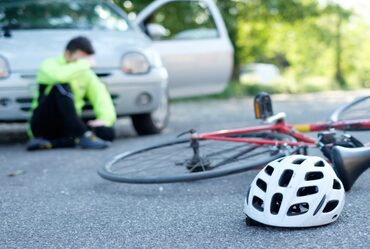Search

Bicyclists remain subject to the majority of traffic laws which vehicles must obey which enables them to stand as responsible parties when accidents occur. Motorists along with bicyclists exhibit caution toward each other while driving in urban areas as well as other streets everywhere. Motorists hold the view that some bicycle riders do not respect traffic regulations yet bicyclists contend that drivers fail to share the road adequately. Drivers and bicyclists may stand at fault for traffic accidents regardless of their incorrect beliefs about each other. The bicyclist usually assumes responsibility for causing most injuries whenever a bicycle strikes a pedestrian.
As a person cycling, they utilize a modest vehicle by their own effort while navigating among swiftly moving larger vehicles. Both traditional bicycle riders and e-bike users should drive their vehicles by following the majority of the same traffic rules that other motorists follow.
A bicyclist who breaks a traffic law will be responsible for resulting damages suffered by others who got involved in a crash caused by the traffic violation. A separate insurance consideration exists regarding whether the cyclist maintains policy coverage to protect such losses (we will discuss this insurance aspect later). Bicyclists are required to follow traffic laws in general yet specific laws exist which target bicycle riders exclusively. Breaking traffic rules meant specifically for bicycle operators forms solid evidence that cyclists failed to exercise suitable care during their activities. Emergency stop laws exist together with laws on bicycle use on winding roads and signs.
Bicyclists generally need to travel close to the right side of the traveled lane during normal traffic conditions & prohibitions on the carrying of packages and other passengers on a bicycle, and Every cyclist needs to wear required night riding visibility tools.
In bike-car collisions negligence defines which driver or cyclist should accept responsibility for the crash. Every motorist must show proper caution to protect other people while driving. When a person fails to meet the required level of care and breaks traffic rules, they create negligence whenever someone becomes harmed. In bicycle-car collisions at intersections the main element determining who is at fault will be traffic violation participation by any involved party (motorist or cyclist). Discover how a person would be considered negligent or at fault when an accident happens. States across the country measure bicycle-car accident liability by examining negligence while uniformly using a variant of fault sharing rules for personal injury damage evaluation.
Most states use comparative negligence standards to assign fault while each jurisdiction has unique rules for implementing it. Both injured parties can get compensation from others when they were harmed even if their percentage of responsibility is unknown. Let’s look at an example. Lionel crossed the four-way stop while driving his bicycle when a car collided with him. When Lionel and the driver both ignored the stop signs the driver experienced reckless speed and operated under the influence of alcohol. The intersection slowed Lionel down as he did not drive under the influence of alcohol. After trial a jury determined that the driver Lionel hit was responsible for 80% of the crash and Lionel held 20% of the fault. Lionel can sue the driver for $160,000 because the driver caused 80 percent of his $200,000 damage amount. Under modified comparative negligence rules, you cannot get compensation when your personal fault for the incident reaches or exceeds 50 percent of the total responsibility (different states have differing percentage levels).